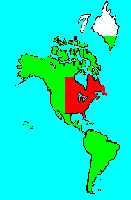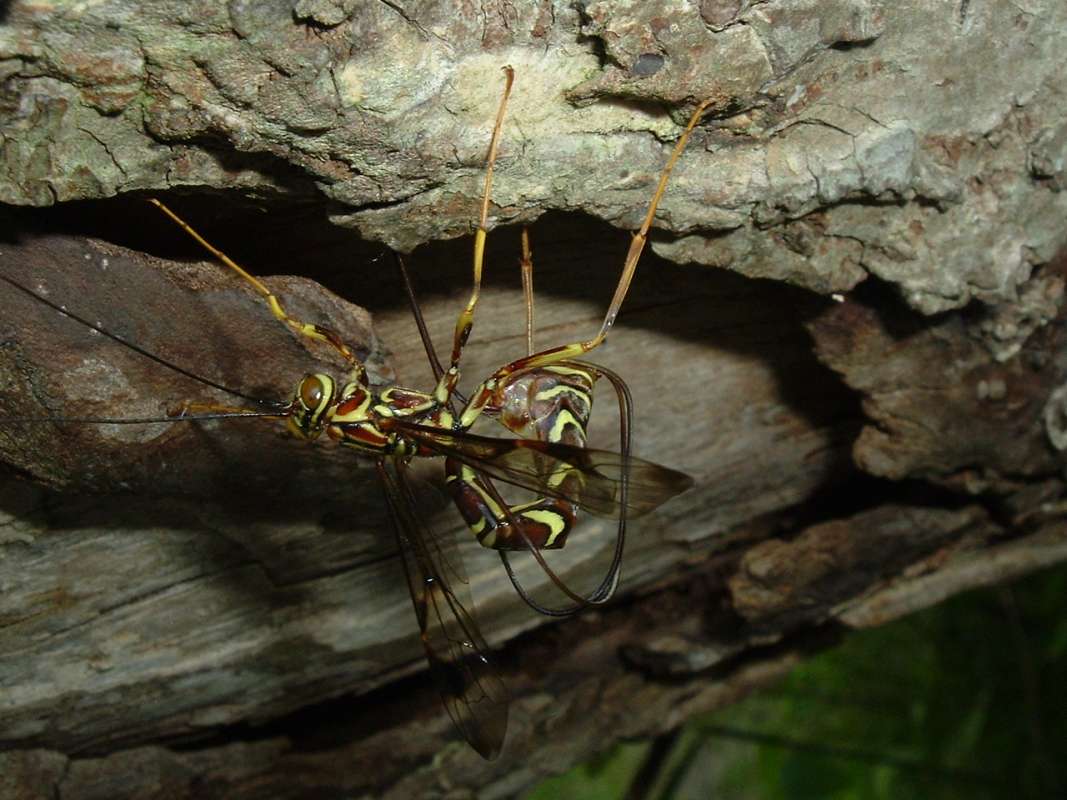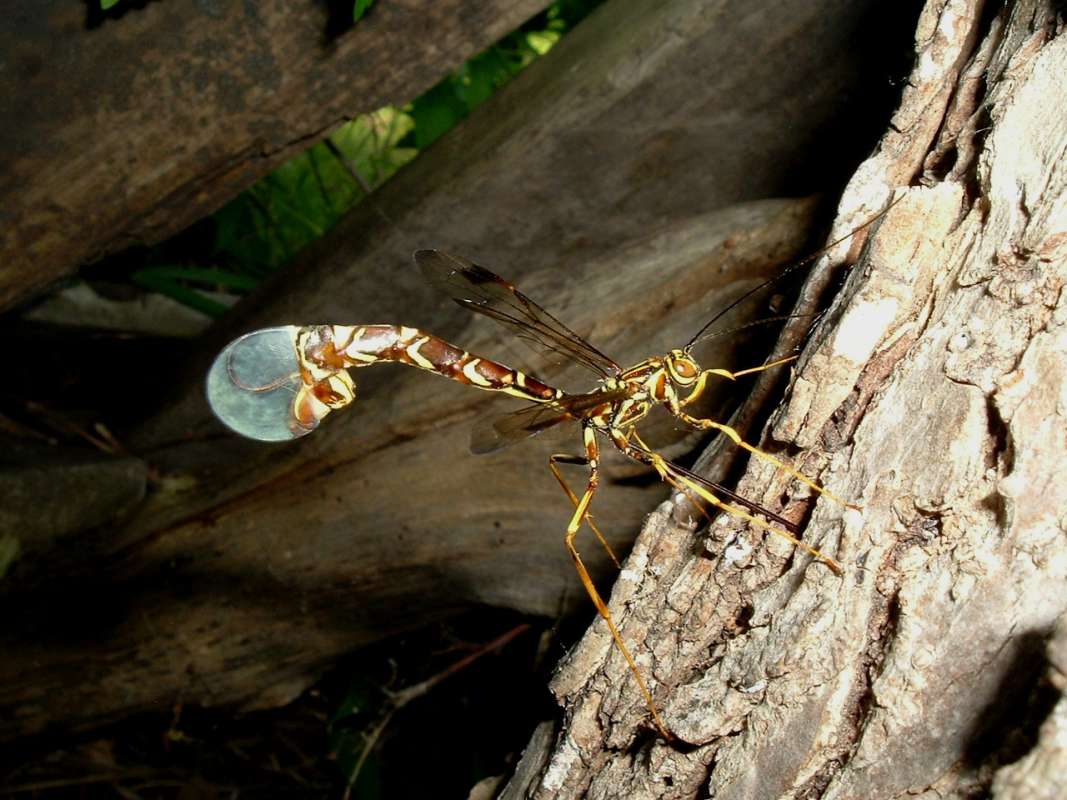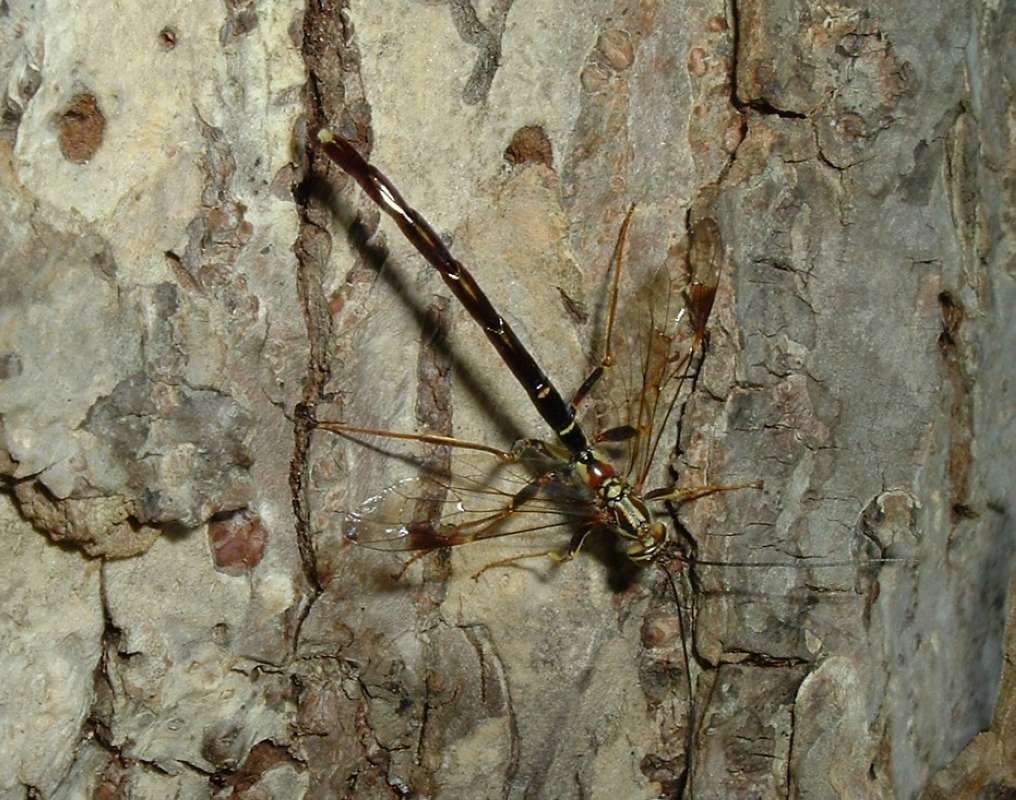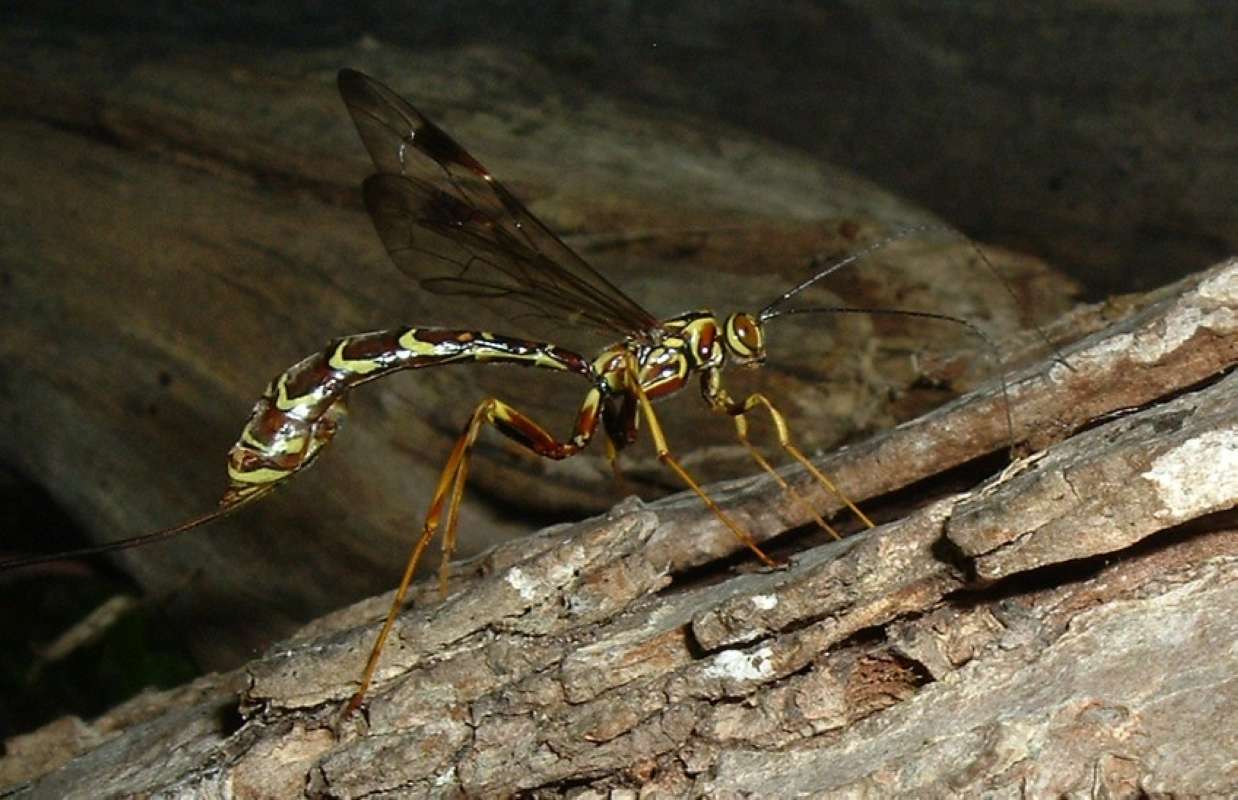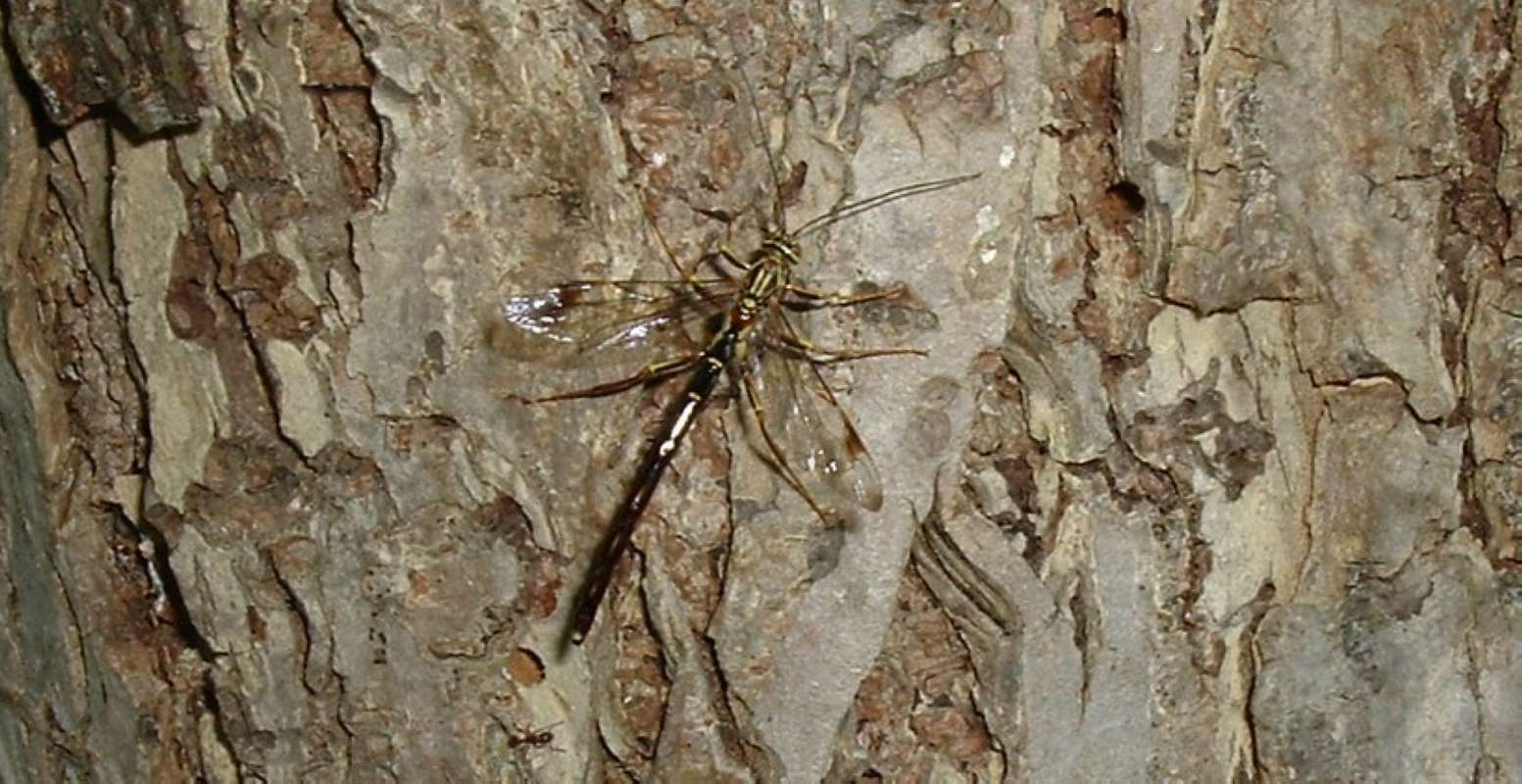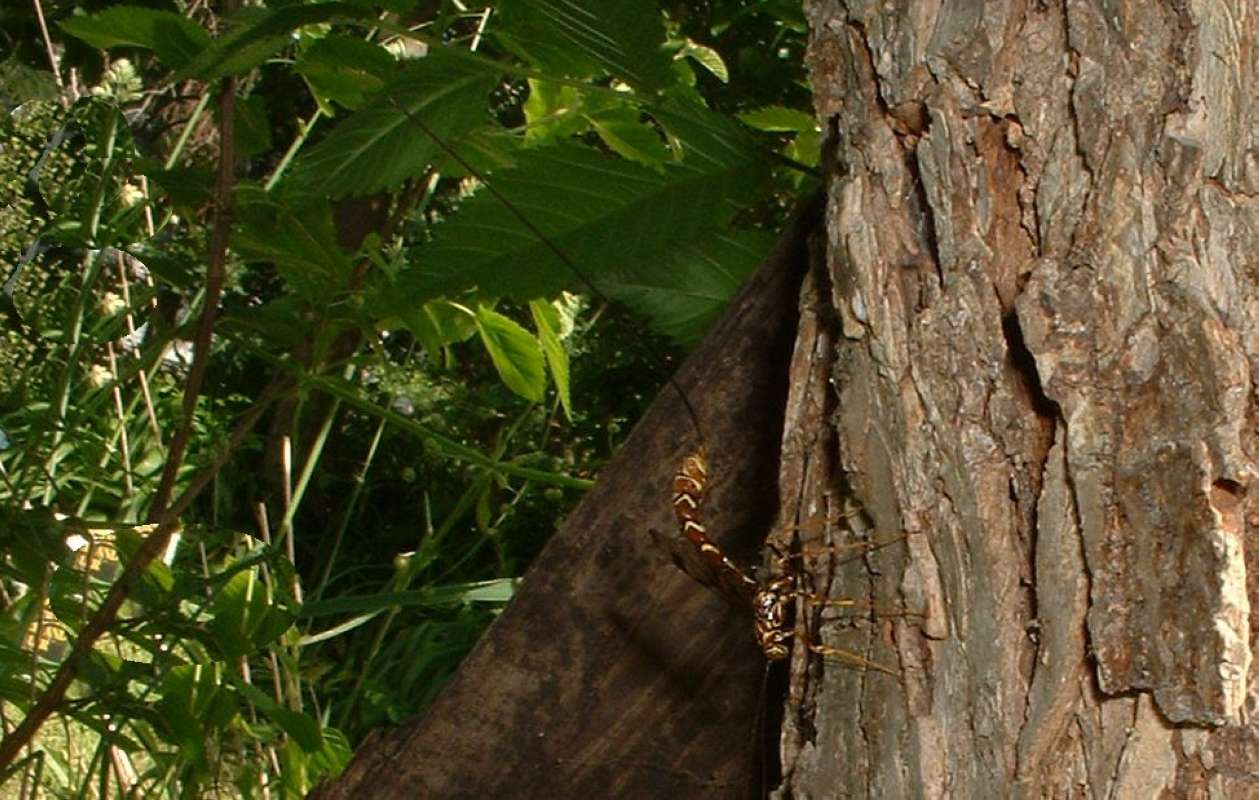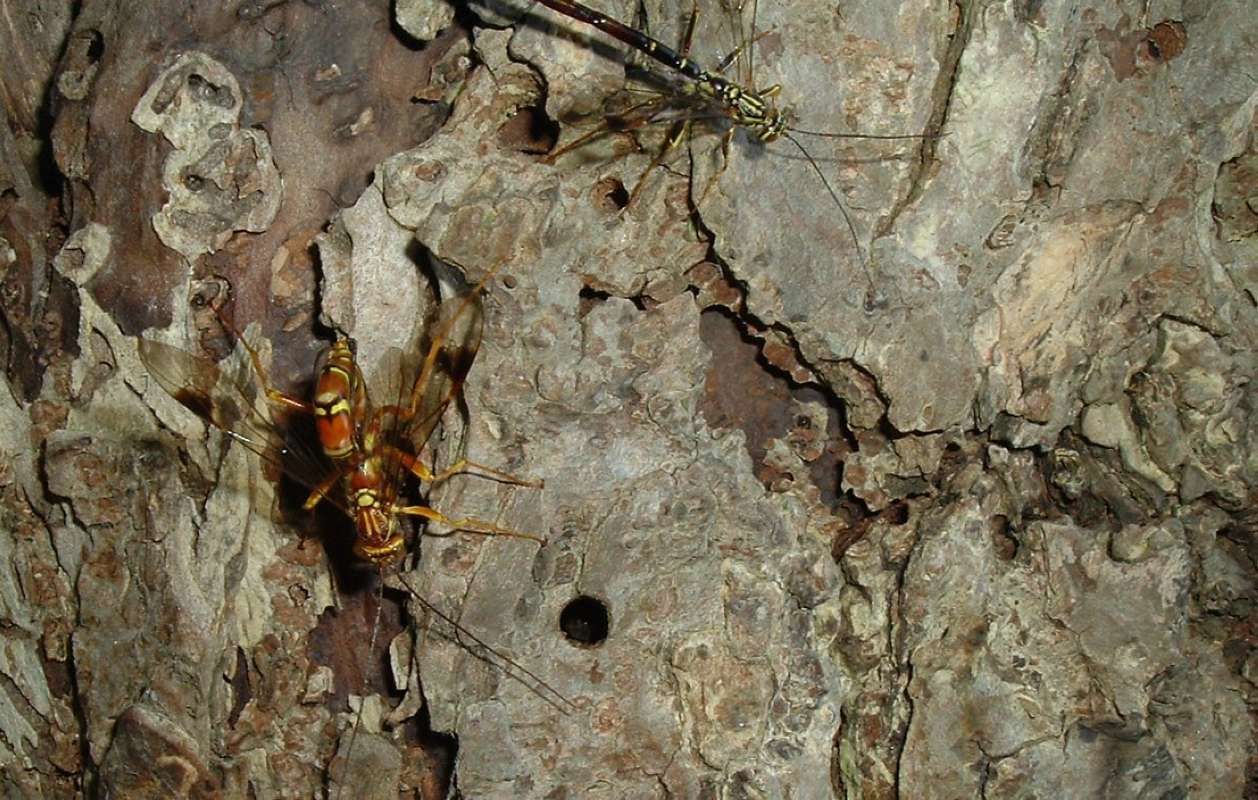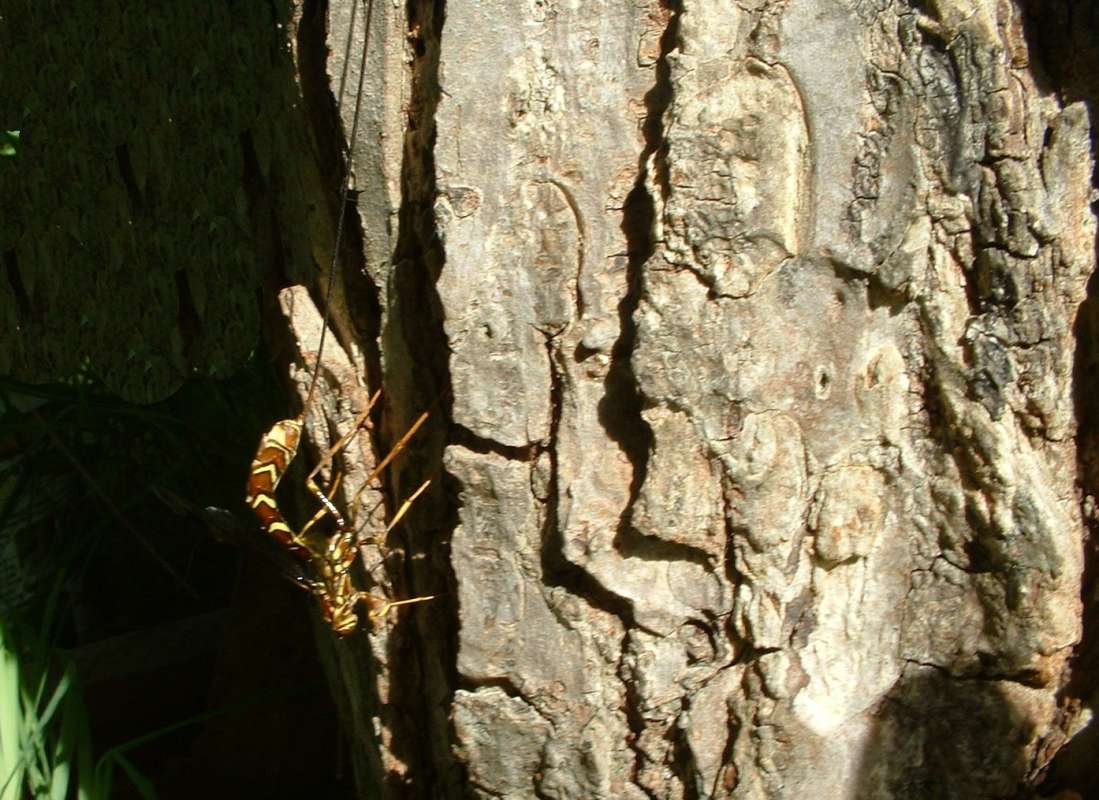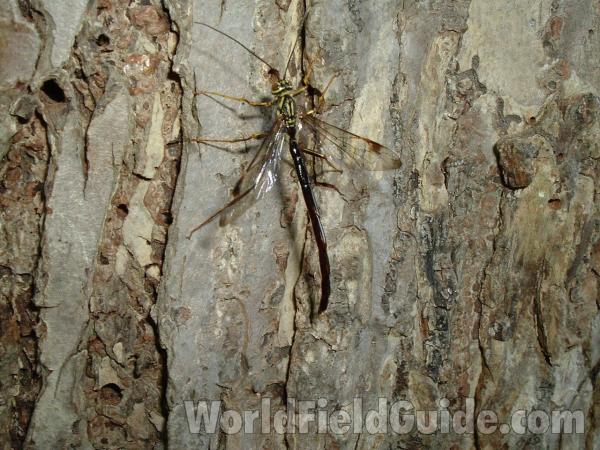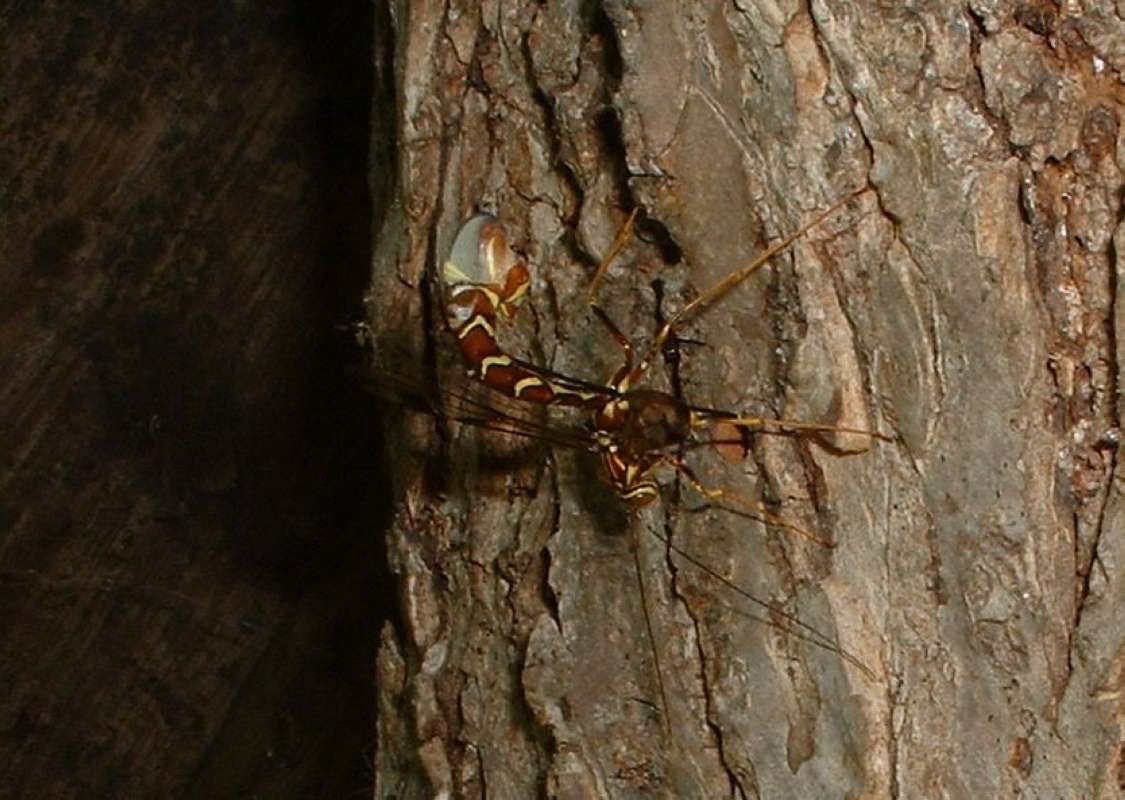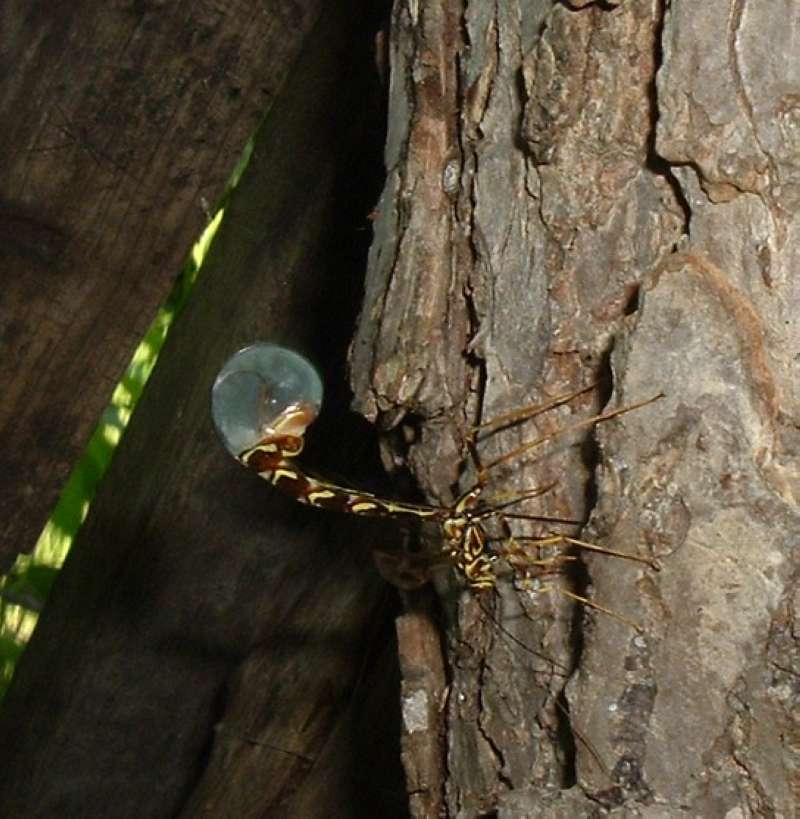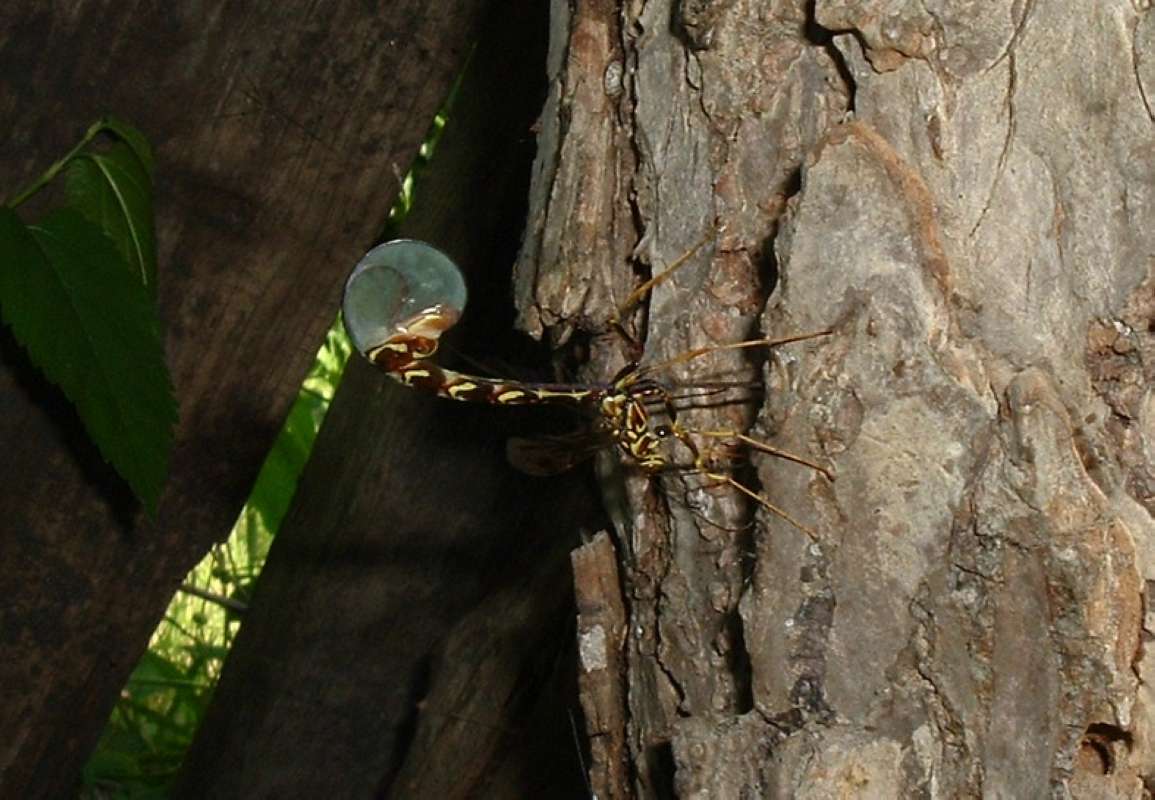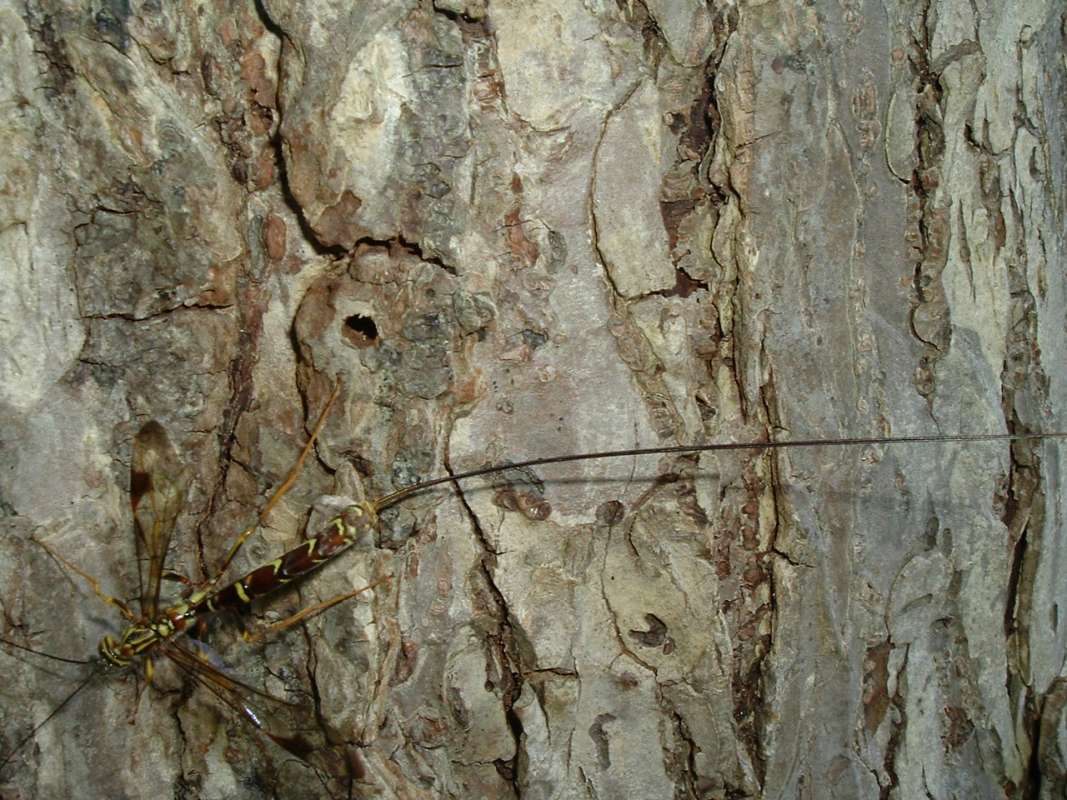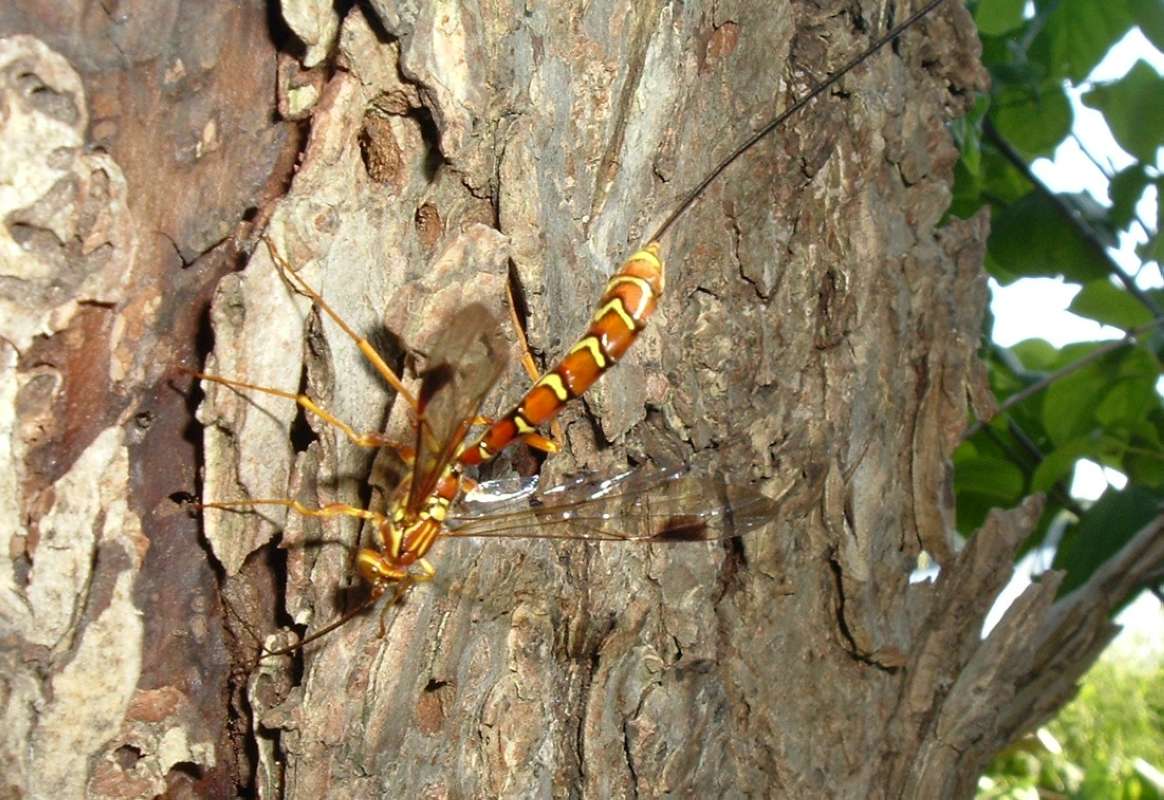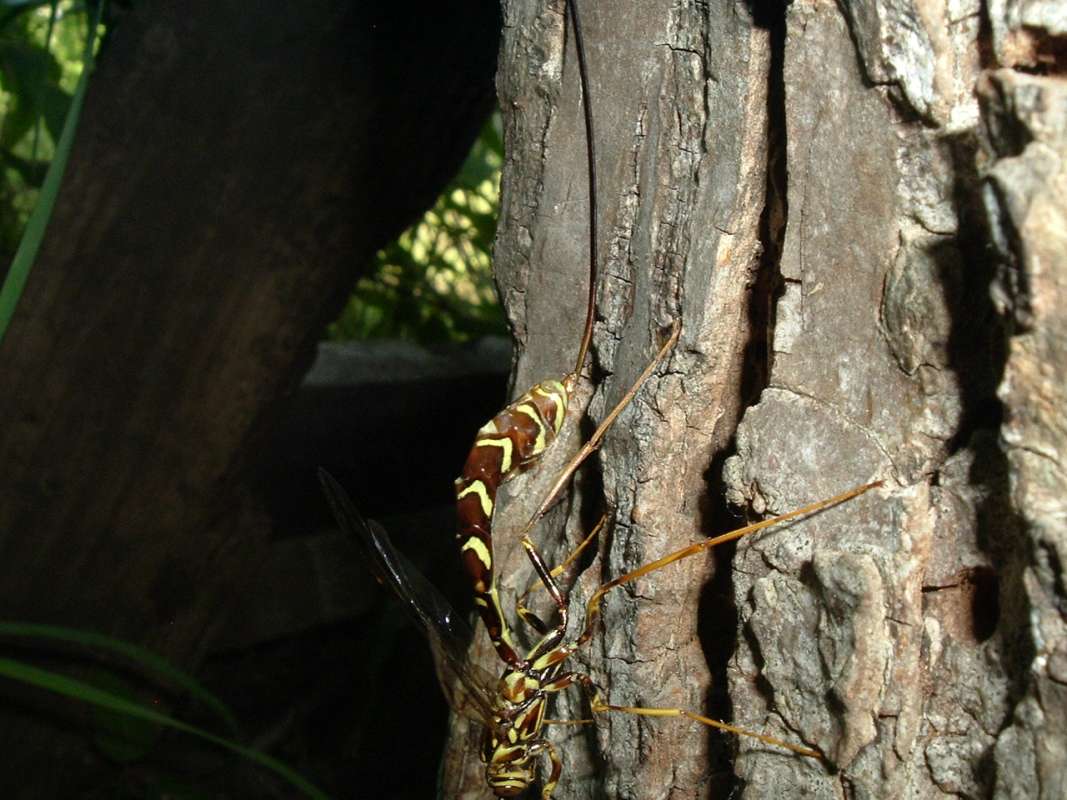SPECIES INFO
Giant Ichneumon (Megarhyssa species one) is found in eastern North America. These images were all taken on a dead stump of an American elm amid a great deal of insect activity. Both males and females of two species were present.Megarhyssa genus contains several species of very large parasitic wasps. The males are up to 1.5 inches long, and the females are up to three inches long with an ovipositor length of over four inches. This long narrow ovipositor is used to deposit eggs deep into dead wood where other wasp larvae occur. The female uses this ovipositor by bending her tail up and around and then back down so as to enter the wood in alignment with the hole. A female has been observed probing its long antennae into open emergence holes to perhaps select a good egg laying spot. The eastern giant ichneumon (Megarhyssa macrurus) has several subspecies. The western giant ichneumon (M. nortoni) is found widely in western North America. Megarhyssa lunator has also been referenced.
Ichneumon Wasps (family Ichneumonidae) are a large family with over 10,000 worldwide species. There are over 3,000 North American species. The larvae of this family feed on larvae of other insects including Lepidoptera and various Hymenoptera. Many entomologists consider this a very beneficial family because they keep many pest species populations in control.
Hymenoptera Order contains the ants, wasps, and bees. There are more than one hundred thousand species in this order in the world. The United States has approximately sixteen thousand species. The larvae resemble caterpillars or maggots. Many of the species in this order are social with different tasks performed by different members of the colony.
Insects (Class Insecta) are the most successful animals on Earth if success is measured by the number of species or the total number of living organisms. This class contains more than a million species, of which North America has approximately 100,000. (Recent estimates place the number of worldwide species at four to six million.)
Insects have an exoskeleton. The body is divided into three parts. The foremost part, the head, usually bears two antennae. The middle part, the thorax, has six legs and usually four wings. The last part, the abdomen, is used for breathing and reproduction.
Although different taxonomists divide the insects differently, about thirty-five different orders are included in most of the systems.
The following abbreviated list identifies some common orders of the many different orders of insects discussed herein:
Odonata: - Dragon and Damsel Flies
Orthoptera: - Grasshoppers and Mantids
Homoptera: - Cicadas and Misc. Hoppers
Diptera: - Flies and Mosquitoes
Hymenoptera: - Ants, Wasps, and Bees
Lepidoptera: - Butterflies and Moths
Coleoptera: - Beetles
Jointed Legged Animals (Phylum Arthropoda) make up the largest phylum. There are probably more than one million different species of arthropods known to science. It is also the most successful animal phylum in terms of the total number of living organisms.
Butterflies, beetles, grasshoppers, various insects, spiders, and crabs are well-known arthropods.
The phylum is usually broken into the following five main classes:
Arachnida: - Spiders and Scorpions
Crustacea: - Crabs and Crayfish
Chilopoda: - Centipedes
Diplopoda: - Millipedes
Insecta: - Insects
There are several other "rare" classes in the arthropods that should be mentioned. A more formal list is as follows:
Sub Phylum Chelicerata
C. Arachnida: - Spiders and scorpions
C. Pycnogonida: - Sea spiders (500 species)
C. Merostomata: - Mostly fossil species
Sub Phylum Mandibulata
C. Crustacea: - Crabs and crayfish
Myriapod Group
C. Chilopoda: - Centipedes
C. Diplopoda: - Millipedes
C. Pauropoda: - Tiny millipede-like
C. Symphyla: - Garden centipedes
Insect Group
C. Insecta: - Insects
The above list does not include some extinct classes of Arthropods such as the Trilobites.
Animal Kingdom contains numerous organisms that feed on other animals or plants. Included in the animal kingdom are the lower marine invertebrates such as sponges and corals, the jointed legged animals such as insects and spiders, and the backboned animals such as fish, amphibians, reptiles, birds, and mammals.
